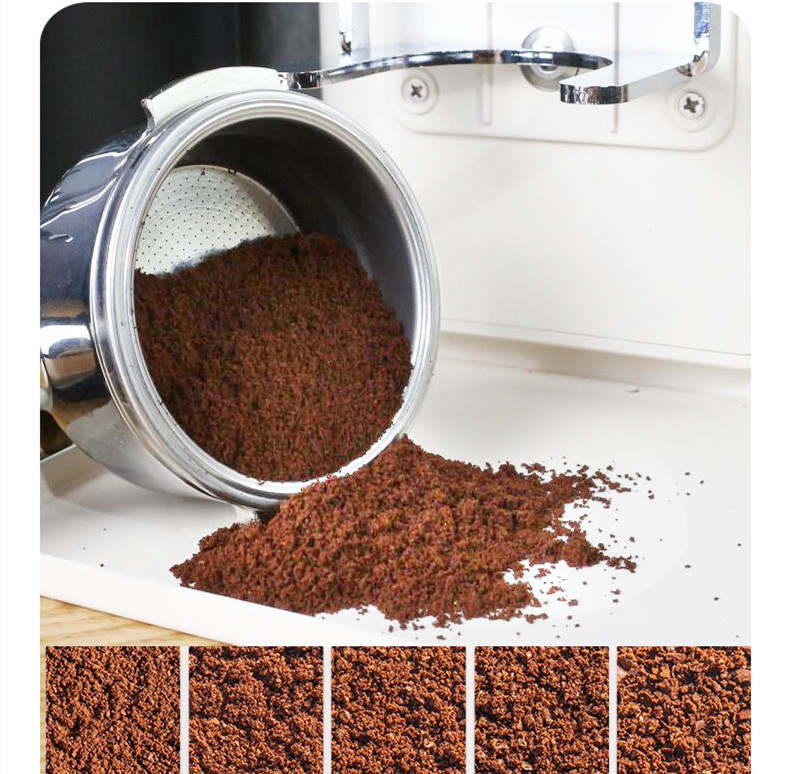Enhancing User Experience Through Coffee Grinding: Practical Strategies for Coffee Enthusiasts
The quality of a coffee grind directly influences the flavor, aroma, and overall satisfaction of every cup. By refining grinding techniques and understanding the nuances of the process, users can elevate their coffee experience from ordinary to exceptional. Below are actionable insights to optimize grinding for a richer, more enjoyable brew.
1. Mastering Grind Consistency for Balanced Flavor Extraction
Achieving uniform particle sizes is critical for extracting flavors evenly during brewing. Inconsistent grinds—where some particles are too fine and others too coarse—lead to over-extraction (bitterness) or under-extraction (sourness), disrupting the coffee’s natural balance.
Burr Grinder Advantages: Unlike blade grinders, which chop beans unevenly, burr grinders crush beans between two abrasive surfaces, producing a more consistent grind. This precision ensures that water interacts uniformly with all coffee particles, extracting oils and flavors evenly.
Adjusting Grind Settings: Tailor the grind size to the brewing method. For example, espresso requires a fine grind to create resistance for the pressurized water, while French press demands a coarse grind to prevent sediment in the cup. Experimenting with settings allows users to customize their brew to personal taste preferences.
Pulse Grinding Technique: For blade grinders, use short bursts (pulses) instead of continuous grinding to avoid overheating the beans. Overheating can scorch the coffee, altering its flavor profile and introducing a burnt aftertaste.
2. Preserving Freshness Through Timely Grinding
Coffee beans begin to lose their aromatic compounds and flavor oils immediately after grinding. To maximize freshness, grind beans just before brewing—a practice that significantly enhances the sensory experience.
Pre-Grinding Pitfalls: Avoid grinding beans hours in advance, as exposure to air accelerates oxidation. Stale grounds produce flat, muted flavors, diminishing the complexity of the coffee.
Storage Solutions: If pre-grinding is unavoidable, store grounds in an airtight, opaque container away from light, heat, and moisture. Vacuum-sealed containers are ideal for preserving freshness, though even these cannot fully replicate the vibrancy of freshly ground coffee.
Batch Size Control: Grind only the amount needed for a single serving or batch. This minimizes waste and ensures every cup is brewed with the freshest possible grounds. For example, a standard 8-ounce cup typically requires 14–18 grams of coffee.
3. Reducing Noise and Heat for a More Pleasant Grinding Experience
Grinding coffee can generate significant noise and heat, both of which detract from the user experience. Excessive heat, in particular, can alter the chemical composition of the beans, leading to subpar flavor.
Manual Grinding Alternatives: Manual grinders operate silently and produce minimal heat, making them ideal for early mornings or shared living spaces. The tactile feedback of manual grinding also fosters a deeper connection to the brewing process.
Electric Grinder Cooling: For electric models, grind in short intervals to prevent motor overheating. Letting the grinder rest between batches maintains optimal performance and prevents thermal degradation of the beans.
Sound-Dampening Techniques: Place a soft mat or towel under the grinder to reduce vibrations and noise. Some users also grind during less disruptive hours to avoid disturbing others.
4. Customizing Grind Settings for Personal Taste Preferences
Coffee is a highly personal experience, and grinding allows users to fine-tune their brew to match individual preferences. Whether seeking a bold, intense cup or a light, nuanced flavor, adjusting grind settings is key.
Experimenting with Brew Times: Finer grinds extract flavors faster, making them suitable for quick methods like espresso. Coarser grinds require longer steeping times, as seen in cold brew or French press. Adjusting grind size in tandem with brew time unlocks new flavor dimensions.
Taste Testing: Brew small batches with varying grind sizes to identify the optimal balance. Note how adjustments affect acidity, body, and aftertaste. This iterative process empowers users to refine their technique over time.
Dialing in for Specialty Drinks: For lattes or cappuccinos, a slightly finer grind than drip coffee enhances creaminess and sweetness. Conversely, a coarser grind for pour-over highlights floral and fruity notes.
5. Streamlining Cleanup for a Hassle-Free Routine
A clean grinder ensures consistent performance and prevents flavor contamination from residual oils. Simplifying the cleanup process encourages regular maintenance, which is essential for long-term user satisfaction.
Quick-Cleaning Hacks: Use a soft brush or pastry brush to dislodge stuck grounds immediately after use. For electric grinders, unplug the device and remove the hopper to access the burrs. Avoid water to prevent rust or electrical damage.
Deep-Cleaning Schedule: Every few weeks, disassemble removable parts (if possible) and wash them with mild soap and water. Ensure all components are completely dry before reassembling to prevent mold growth.
Odor Management: Coffee oils can leave a lingering smell in grinders. Wiping down interior surfaces with a damp cloth and a drop of vinegar neutralizes odors without affecting flavor.
By focusing on consistency, freshness, and user-centric adjustments, coffee grinding becomes a rewarding ritual rather than a chore. These strategies not only enhance the final brew but also foster a deeper appreciation for the craft of coffee making.


